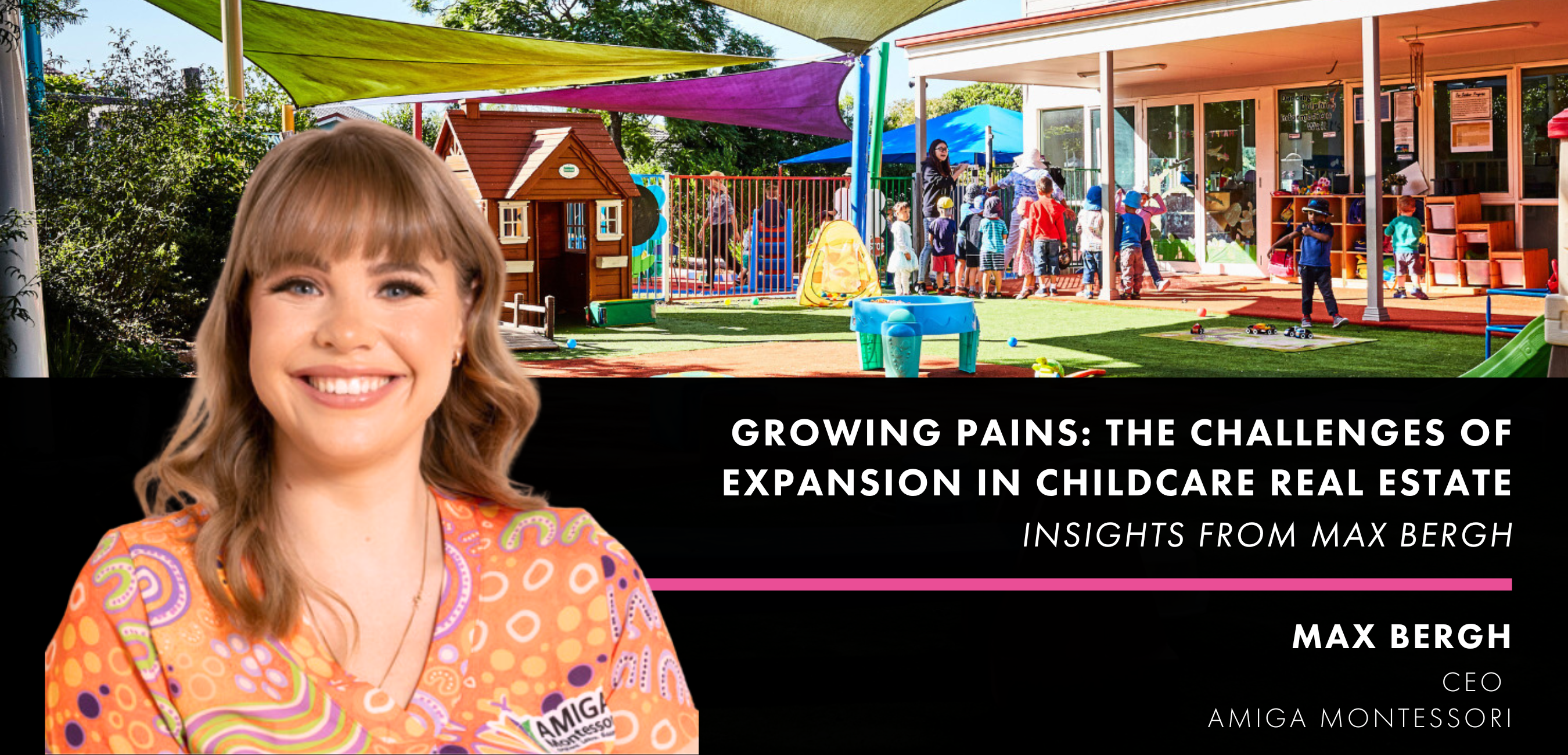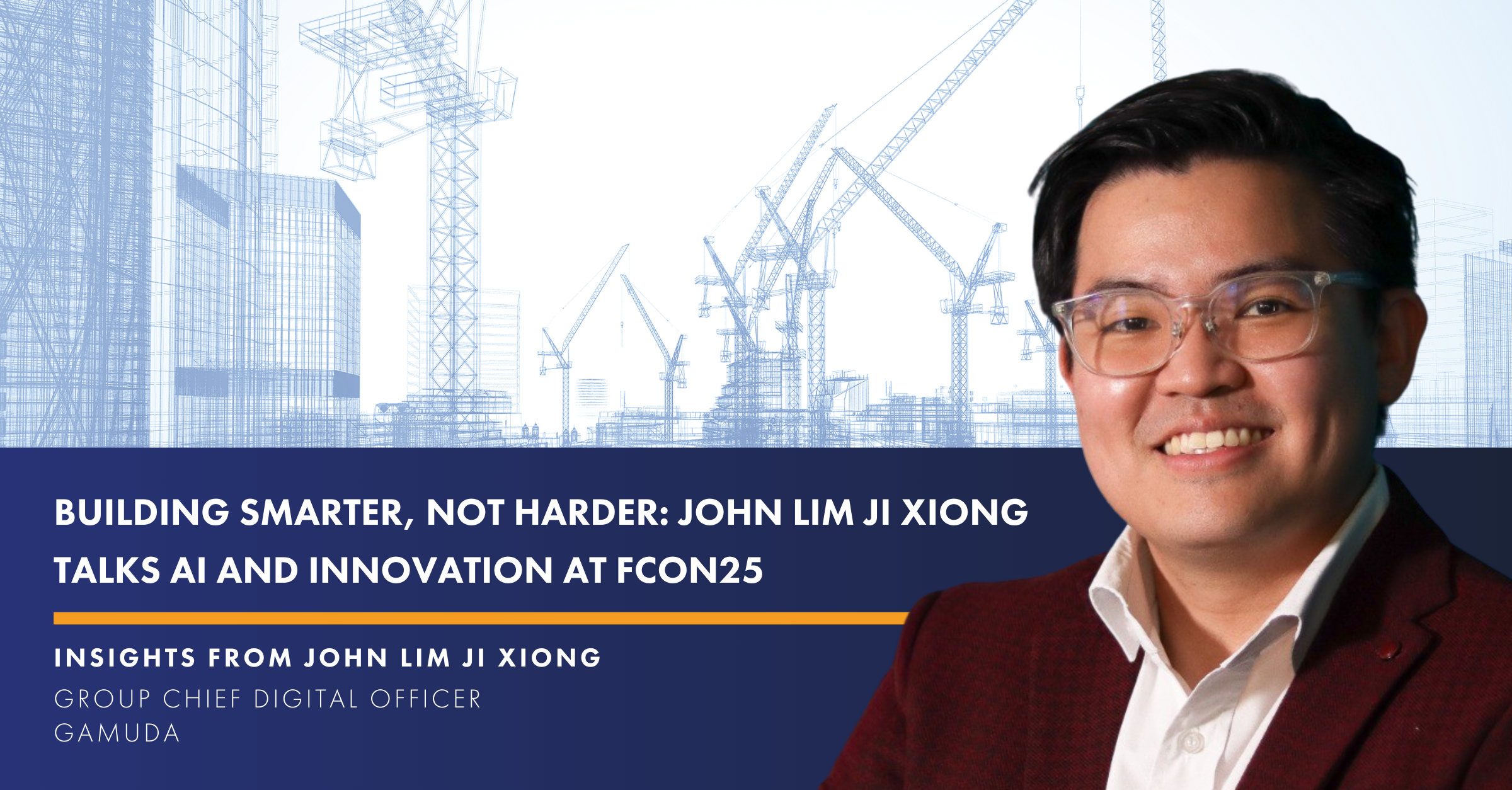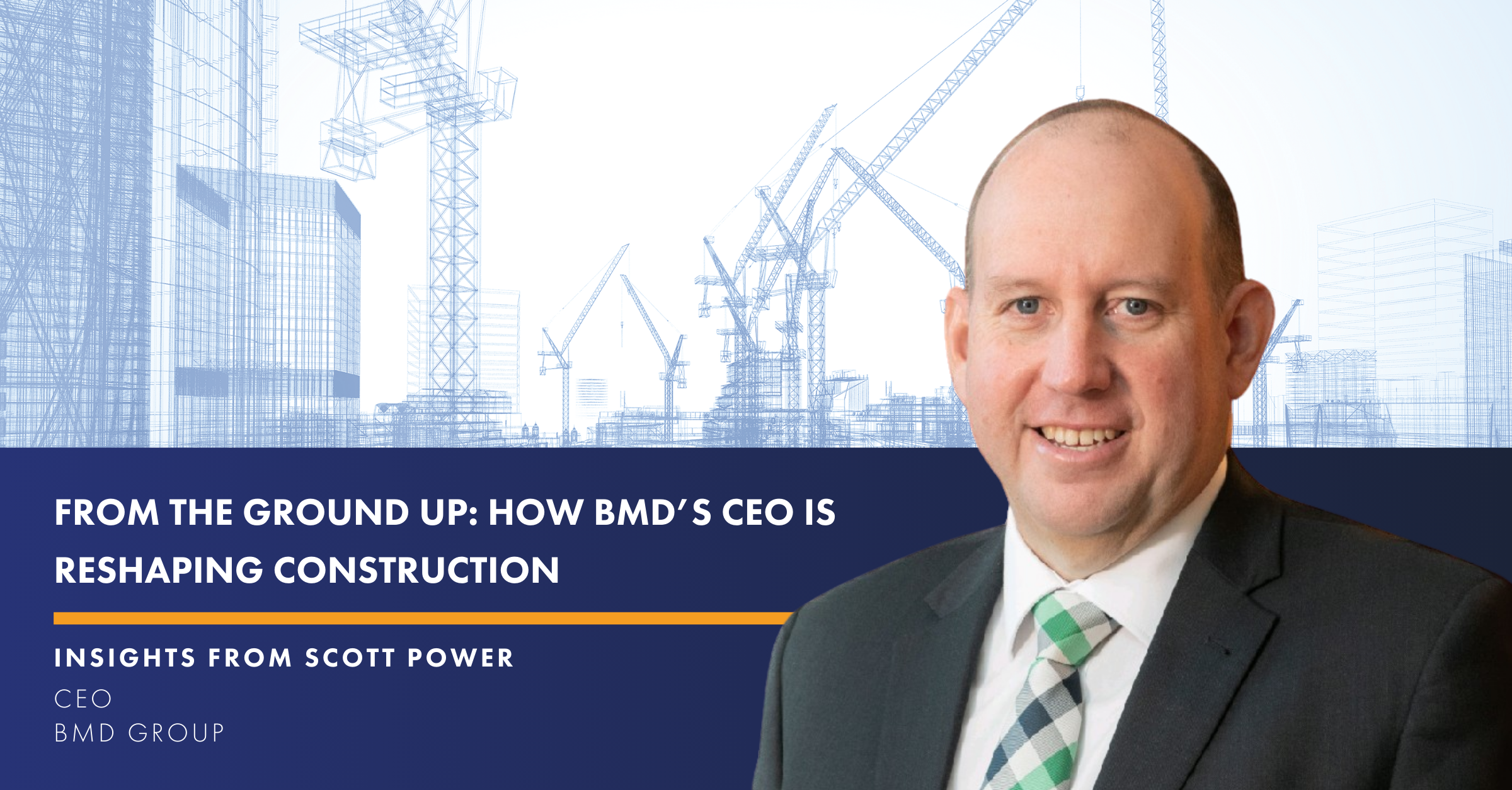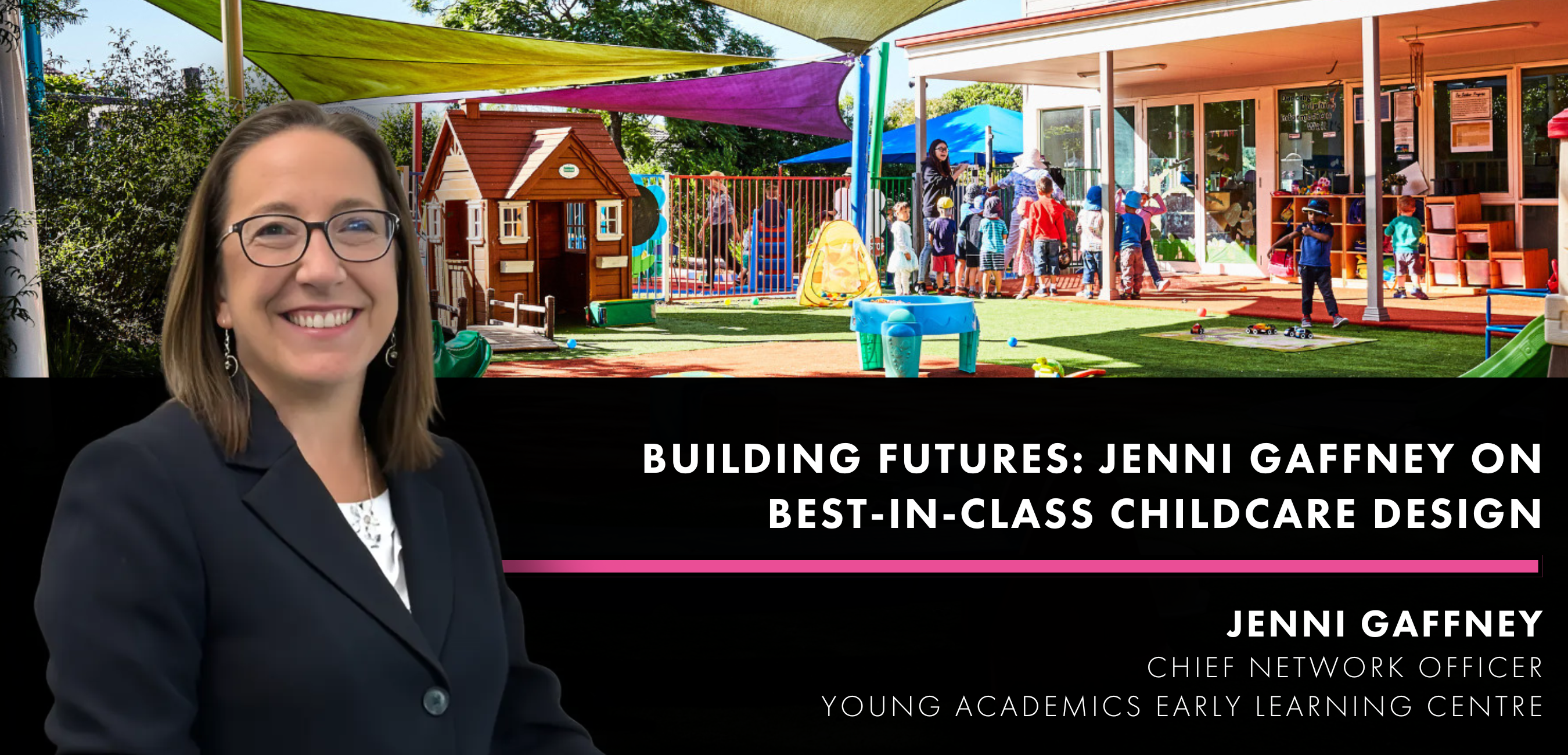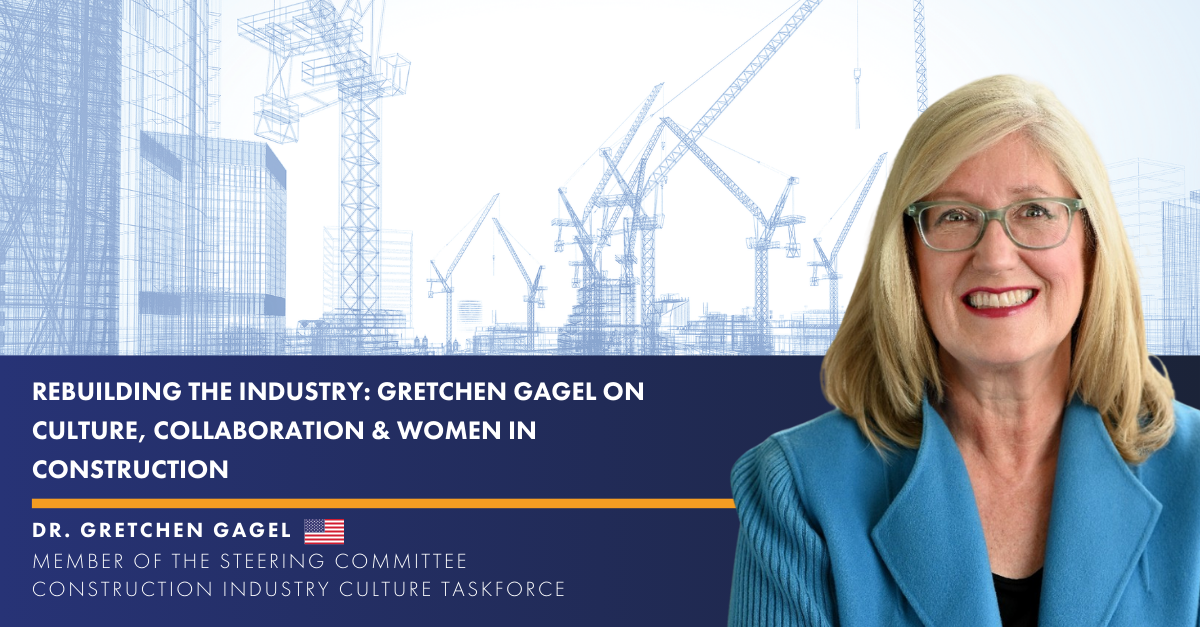A childcare centre’s success isn’t just about its location or physical design – it’s about securing the right partnerships, managing financial sustainability, and navigating an increasingly complex regulatory environment. As demand for high-quality early learning surges, operators, investors, and developers must work together to create centres that are not only financially viable but also operationally effective.
Max Bergh, CEO of AMIGA Montessori, has firsthand experience navigating these challenges. With a deep understanding of the business dynamics that drive success in childcare operations, she shares insights on what makes a site truly viable, how operators can stand out in a crowded market, and why collaboration between landlords and tenants is key to long-term value creation.
In this interview, Max explores what investors and landlords need to know about partnering with operators, the trends shaping centre design, and why long-term collaboration – not just financial negotiations – is key to success in this evolving sector.
FuturePlace: Childcare real estate is evolving rapidly with changing regulations, funding shifts, and increasing demand. From an operator’s perspective, what do you see as the biggest challenges and opportunities in securing and developing high-quality childcare facilities?
Max Bergh:
Challenges in securing land and managing competition
One of the primary challenges in childcare development for small to medium providers is securing land in high-growth areas before it is acquired by larger providers with aggressive expansion strategies. As competition intensifies, it becomes increasingly difficult for new entrants and mid-sized operators to secure prime locations without compromising on long-term viability.
However, recent media scrutiny in the sector has intensified, with isolated incidents being used to discredit larger for-profit providers. Developers should consider the benefits of diversifying their operator portfolio, ensuring they are not reliant on a single provider and instead partnering with operators that have strong governance and compliance practices to mitigate reputational risks.
Challenges in rental agreements and market sustainability
With childcare investment at an all-time high, a surge of new entrants has created unsustainable rental expectations. Inexperienced providers eager to enter the sector are offering inflated rental percentages, funding their own playgrounds, and committing to unsustainable lease terms. While this may appear attractive in the short term, it does not align with our business model and presents long-term financial risks for both operators and landlords. Maintaining rental percentages within sustainable industry standards is essential to ensuring operational longevity and competitiveness.
Opportunities: the value of brand investment and financial strength
Investing in brand reputation and operational excellence extends far beyond occupancy rates and customer satisfaction – it directly impacts financial viability. While we may not always offer the highest rent or the largest capital contributions, our strong reputation and financial stability are recognised by major lenders, improving yields for landlords. In several instances, this credibility with financial institutions has been the key factor in securing properties over competitors offering higher rents but lacking experience and reputational capital. For investors, choosing a financially sound and reputable provider is critical to ensuring long-term stability and maximising asset value.
FuturePlace: When assessing a new site for development, what are the key factors that determine whether it will be a successful location for a childcare centre?
Max Bergh: Selecting the right location for a childcare centre is critical to AMIGA Montessori’s long-term success and requires a strategic assessment of key factors that influence demand, sustainability, and growth potential. The number of children aged 0–6 in the area, along with projected population growth, provides a strong indicator of future viability. AMIGA carefully evaluates market saturation, assessing the number of existing centres, available places, and the ratio of places to children – with a target of over three to ensure enrolment demand remains strong.
A young population with a high proportion of families is a core consideration, as is cultural diversity, with Montessori education well-recognised among immigrant communities. Workforce density also plays a role, as demand is consistently higher in employment hubs and commuter corridors, where families require reliable early education options.
Beyond demographics, the physical location must align with AMIGA’s standards – proximity to public transport, schools, health services, and recreational facilities enhances accessibility and convenience for families. Future urban development is also a crucial factor; even if an area’s current numbers appear low, if it is zoned for residential growth, it may quickly become a high-demand location.
FuturePlace: One of the key themes of the summit is ‘collaboration across stakeholders.’ How can developers, investors, and operators work better together to create childcare centres that are both financially viable and operationally effective?
Max Bergh: Successful childcare developments require developers, investors, and operators to shift from an adversarial mindset to a true partnership. When first meeting a landlord, I often use the analogy that we will be together longer than some marriages. Like marriage, understanding each other’s needs and motivations is key.
Open, transparent communication from the outset, and an investment of time to get to know one another, allows each party to identify what is essential, what is flexible, and where compromises can be made. A partnership built on mutual respect and trust ensures that no one is solely prioritising their own interests but rather taking a balanced approach to secure the best outcome for all involved.
When each party is willing to give where they can, the result is a financially viable and operationally effective childcare centre – one that meets the needs of families while also delivering strong returns for investors and developers.
FuturePlace: The design and layout of childcare centres play a crucial role in their success. What trends or innovations are you seeing in the design and construction of new centres that enhance both operational efficiency and the learning environment?
Max Bergh: The design and layout of childcare centres are fundamental to both operational efficiency and creating an optimal learning environment. A growing trend we’ve incorporated into our operation is the enhancement of staff spaces, recognising that educator well-being directly impacts the quality of care. Purpose-built breakout areas for rest and relaxation ensure that staff can recharge and be at their best when engaging with children.
Additionally, the integration of technology is also transforming classrooms, with smart whiteboards, projectors, and interactive tools bringing extraordinary learning experiences into daily education.
In my view, there has been a shift towards luxury hotel-style centres, where the focus appears to be on aesthetics. Some new centres resemble high-end designer spaces, set up like celebrity-style homes, though I have yet to see how these environments function in practice. While visually striking, I believe there is a risk that the focus on early childhood education is diluted in the pursuit of wowing parents with an opulent façade.
At AMIGA Montessori, our mission remains clear – to nurture confident, well-rounded future leaders through an education-first approach. Our environments may sometimes appear minimalist in comparison, but that is intentional. A non-cluttered, thoughtfully designed space that focuses on Montessori materials rather than excessive decoration creates an effective, calm, and engaging learning atmosphere.
While design trends will continue to evolve, I believe it is essential that educational outcomes remain the priority, ensuring children from all backgrounds have access to a stimulating yet balanced learning environment.
As the childcare sector evolves, understanding the intersection of business success and real estate investment is more crucial than ever. At the Childcare & Early Learning Real Estate Summit 2025, Max will share her expertise in two key discussions designed to help operators and investors navigate the challenges and opportunities shaping the future of childcare real estate.
In the panel discussion, “Generating Economic & Social Value to Create Lasting Impact,” Max will join Lynda Salvo (Explorers Early Learning), Chris Fischer (Paisley Park), and Simone Andrews (Aspire Early Education), facilitated by Carolyn Morris (YMCA Victoria). Together, they will explore how operators and owners can strategically manage location selection, regulatory compliance, facility design, and investment opportunities to drive both economic and social value.
Max will also co-moderate an interactive roundtable discussion, “Organic Growth and the Pitfalls of Partners,” alongside Karen Mills, Head of Operations at AMIGA Montessori. This session will provide a deep dive into the complexities of expansion, examining the challenges operators face when growing their businesses and the risks and rewards of forming partnerships.
If you’re looking to stay ahead in this competitive and evolving sector, these sessions are not to be missed. Download the event brochure now to explore the full agenda and secure your place at the Childcare & Early Learning Real Estate Summit 2025.
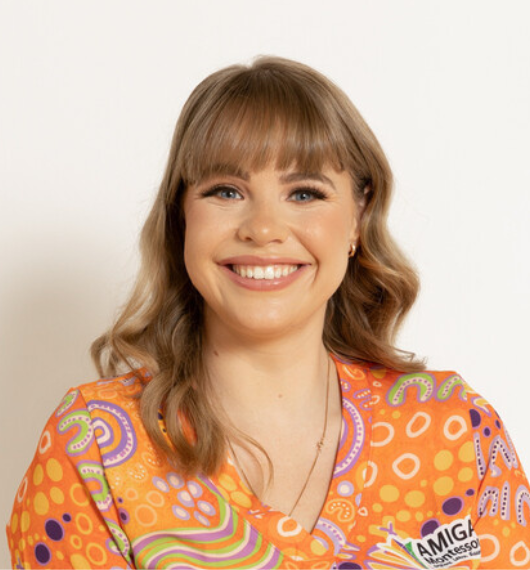
Max Bergh
CEO, AMIGA Montessori

